Though still not fully excavated, the ancient Chu mausoleum site attracts increasing numbers of visitors from across the country, Deng Zhangyu reports.
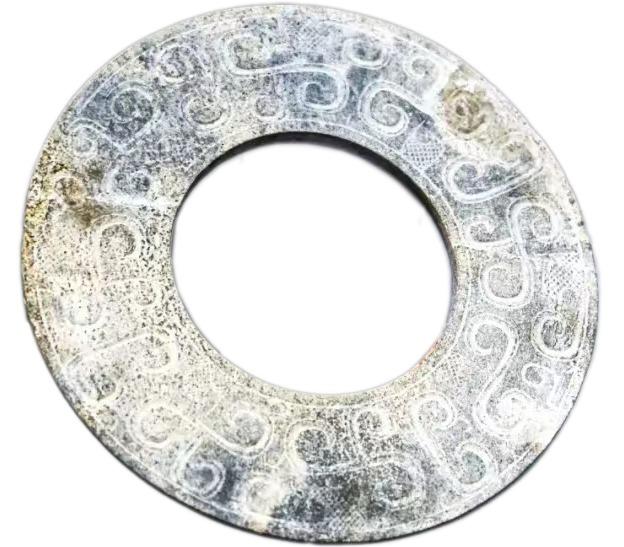 A jade disc with unique patterns of the Chu culture is among the thousands of jade wares unearthed from the Xiongjiazhong National Archaeological Heritage Park in Jingzhou, Hubei province. (PROVIDED TO CHINA DAILY)
A jade disc with unique patterns of the Chu culture is among the thousands of jade wares unearthed from the Xiongjiazhong National Archaeological Heritage Park in Jingzhou, Hubei province. (PROVIDED TO CHINA DAILY)
Dressed in the costumes of the 2,500-year-old Chu culture, Zhou Zhou, a marketing manager at the Chu King's Mausoleum at the Xiongjiazhong National Archaeological Heritage Park in Jingzhou, Hubei province, begins work. During the Spring Festival holiday, he and his colleagues at the heritage park, all the way from the ticket sellers to the cleaners, will be dressed Chu-style and will be putting on special performances to welcome visitors from across the country.
The Chu King's Mausoleum is known for its large chariot horse pits and well-preserved tombs, one of which houses one of the rulers of this powerful vassal state, which existed during the Spring and Autumn Period (770-476 BC) and the Warring States Period (475-221 BC). Altogether, the site is comprised of 40 chariot horse pits, from which 43 chariots and 164 horses have been unearthed.
READ MORE: Tracing thread of continuity in Chinese governance system
Although the majority of the tombs are yet to be excavated, the presence of chariots and horses attracts tourists interested in exploring ancient military power and experiencing the rich and imaginative culture of the Chu state.
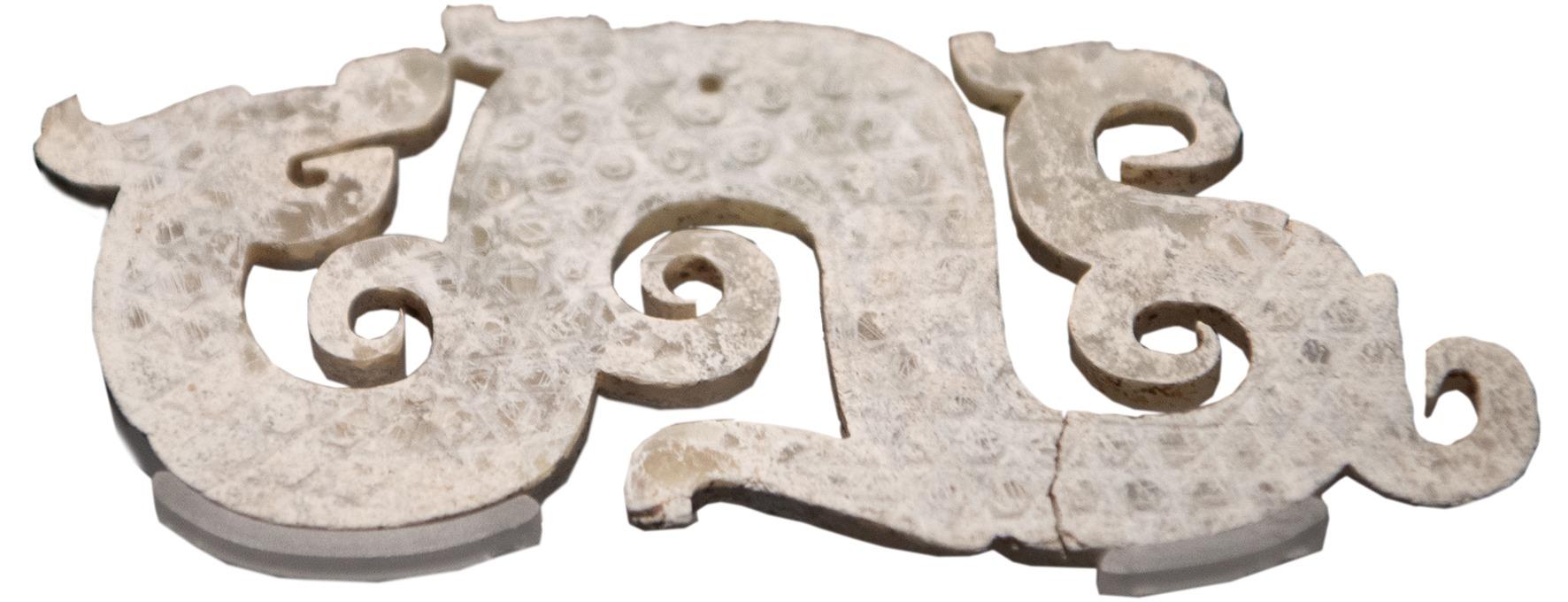 A dragon-phoenix jade piece with unique patterns of the Chu culture is among the thousands of jade wares unearthed from the Xiongjiazhong National Archaeological Heritage Park in Jingzhou, Hubei province. (PROVIDED TO CHINA DAILY)
A dragon-phoenix jade piece with unique patterns of the Chu culture is among the thousands of jade wares unearthed from the Xiongjiazhong National Archaeological Heritage Park in Jingzhou, Hubei province. (PROVIDED TO CHINA DAILY)
According to Zhou, the site will be staging reenactments of wars in ancient China, including soldiers shooting arrows. In the large hall housing the chariot horse pits, visitors can clearly see the neat layout of chariots with six horses, four horses or two horses, which were used by different levels of nobility.
"The Chu people believed that the world after death is the same as the real world. That's why they buried the horses and vehicles used by their rulers," says Zhou.
Four kinds of chariots have been found in the pits — those used for war, for the transportation of army supplies, for maintenance and large chariots with exquisite umbrellas used by rulers during ceremonies.
Chariots could only be used by the nobility, and the number of horses permitted varied according to hierarchical ritual system centering around kings of the Eastern Zhou Dynasty (770-256 BC).
During the time of the Chu state, only the Zhou kings, who ruled all the vassal states by name, were allowed a six-horse chariot, while the Chu ruler was allowed four horses. However, the biggest pit at the Chu King's Mausoleum contained six-horse chariots.
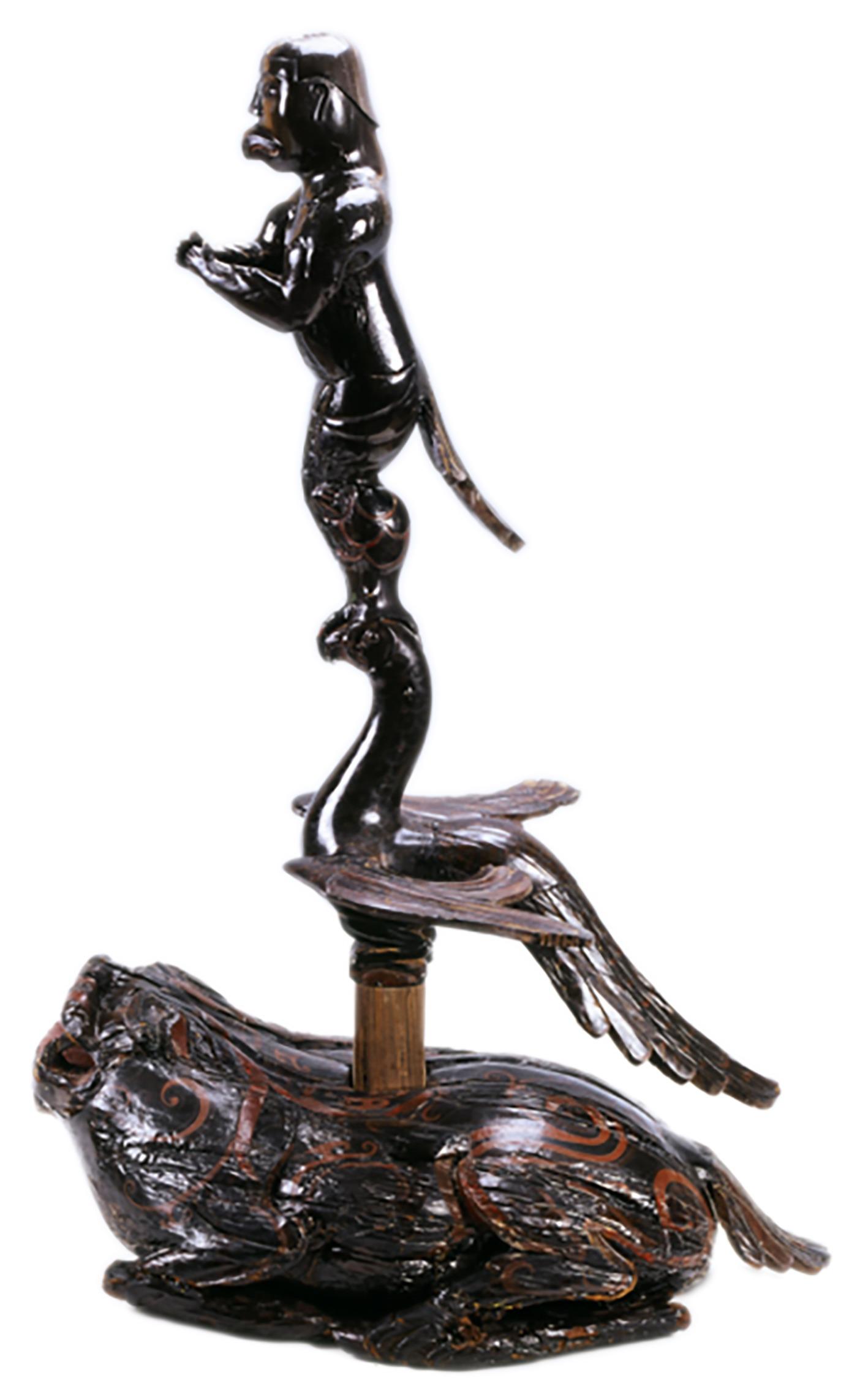 A lacquer ware figurine collected by the Jingzhou Museum shows the vivid imagination of the Chu people. (PROVIDED TO CHINA DAILY)
A lacquer ware figurine collected by the Jingzhou Museum shows the vivid imagination of the Chu people. (PROVIDED TO CHINA DAILY)
At the time, China was divided into several different states, all of which were eventually conquered by Ying Zheng, China's first emperor, of the Qin Dynasty (221-206 BC). Officially known as Qinshihuang, he united China in 221 BC and his tomb houses the world-renowned Terracotta Warriors.
"Having a six-horse chariot was absolutely against regulations at the time. We guess they demonstrated the ambition of the person buried in the tomb to become the one ruler with supreme power himself, to be on par with Zhou kings," says Jia Hanqing, deputy director of the Jingzhou Museum, who has been involved in the excavation of the mausoleum as an archaeologist since 2006.
The Xiongjiazhong site consists of a king's tomb, a queen's tomb, tombs for their servants, sacrificial pits and chariot horse pits. The site was discovered in 1979 and three rounds of excavation have been carried out since then. In 2012, the Xiongjiazhong National Archaeological Heritage Park opened to the public.
"The artifacts unearthed reveal the existence of a rich and powerful state in the middle and lower reaches of the Yangtze River more than 2,200 years ago," says Jia.
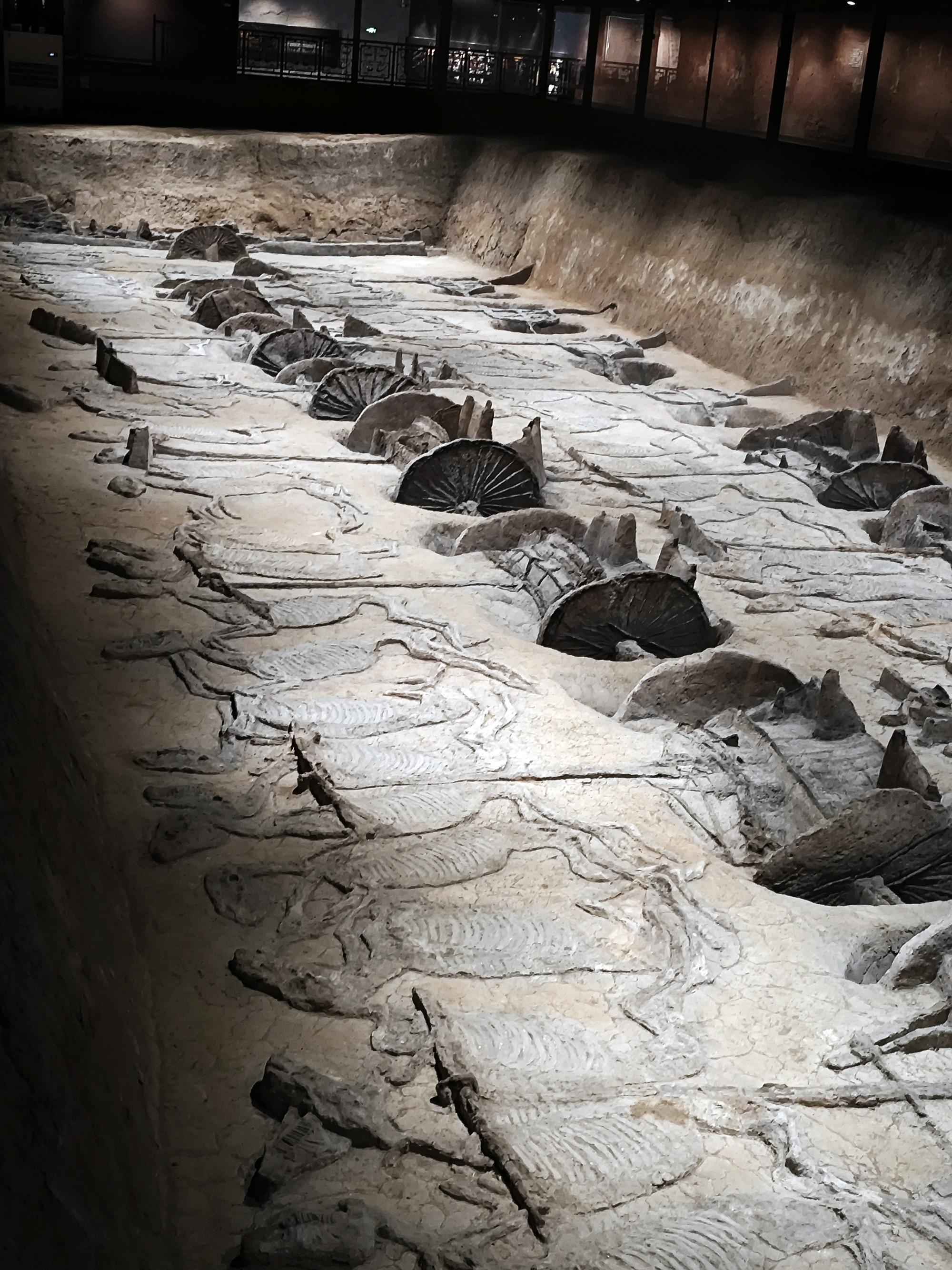 The largest chariot horse pit in the Chu King's Mausoleum, with remnants of horse teeth and parts of chariots. (PROVIDED TO CHINA DAILY)
The largest chariot horse pit in the Chu King's Mausoleum, with remnants of horse teeth and parts of chariots. (PROVIDED TO CHINA DAILY)
Twenty kings ruled Chu over the course of 800 years. The main occupant remains unknown because the king's tomb has yet to be excavated, but the large size of its chariot horse pits makes it the biggest Chu state tomb found to date.
Horses and chariots were strategically important, and represented a state's power. Officials were placed in charge of the ruler's horses, and records show that the Chu state boasted more than 10,000 horses and 1,000 chariots during its heyday.
"The horses were killed before being placed in the pits and we have found traces of their teeth," says the 57-year-old archaeologist.
The remnants offer a glimpse into a wealthy state and its culture of creativity, imagination and romance.
Over 3,000 artifacts, such as jade ware, lacquer ware and bronze ware, have been discovered at the site.
"The Chu people were very imaginative, and much of their art looks a little bit strange," Jia says.
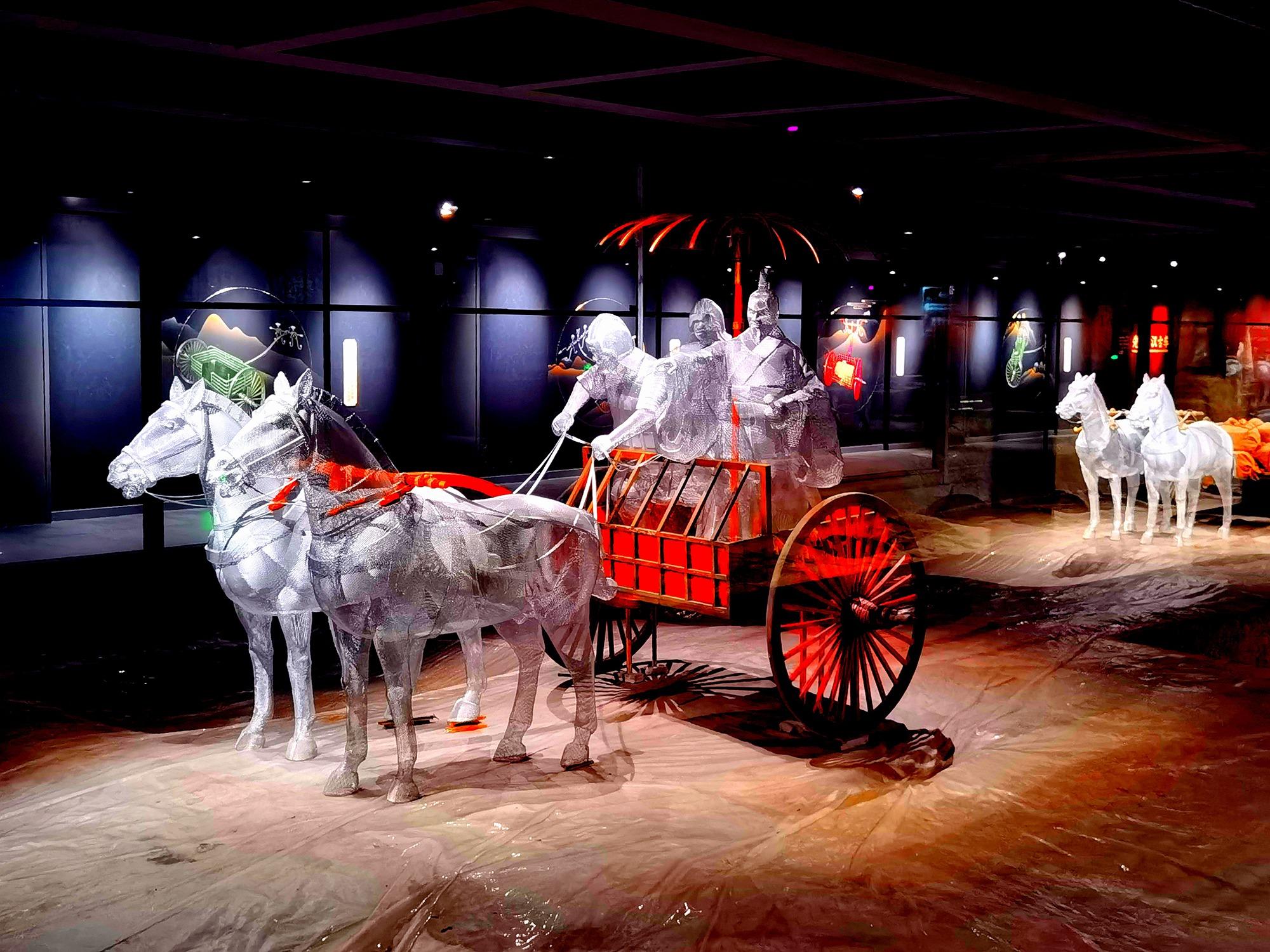 A chariot sculpture made by artists based on the chariot horses unearthed from the pit. (PROVIDED TO CHINA DAILY)
A chariot sculpture made by artists based on the chariot horses unearthed from the pit. (PROVIDED TO CHINA DAILY)
For instance, a sculpture in the collection of the Jingzhou Museum depicts a man standing on a phoenix. He has a beaklike mouth and a feathered tail, just like a bird. Beneath the phoenix is a toad with a bird's tail.
Jia says that the Chu people worshipped the phoenix and regarded it as their totem. Images of the mythological bird have been found carved on jade ware, lacquer ware and even woven onto the silk robes worn by nobles.
The site is close to many other royal tombs as it was located near the state capital. Large quantities of exquisitely made lacquer ware produced by the Chu people have been found in the area.
"Lacquer items were used in daily life, such as for cooking and also used to decorate musical instruments like drums. They were so well-made that most look more like pieces of art rather than handicrafts," Jia adds.
Apart from these artifacts, Chu also produced one of ancient China's most famous poets, Qu Yuan, who was one of the state elites. The Dragon Boat Festival, which is held on the fifth day of the fifth lunar month, commemorates the great poet, who drowned himself in the Miluo River after hearing of his state's fall. His romantic verses have had a far-reaching influence over Chinese poetry.
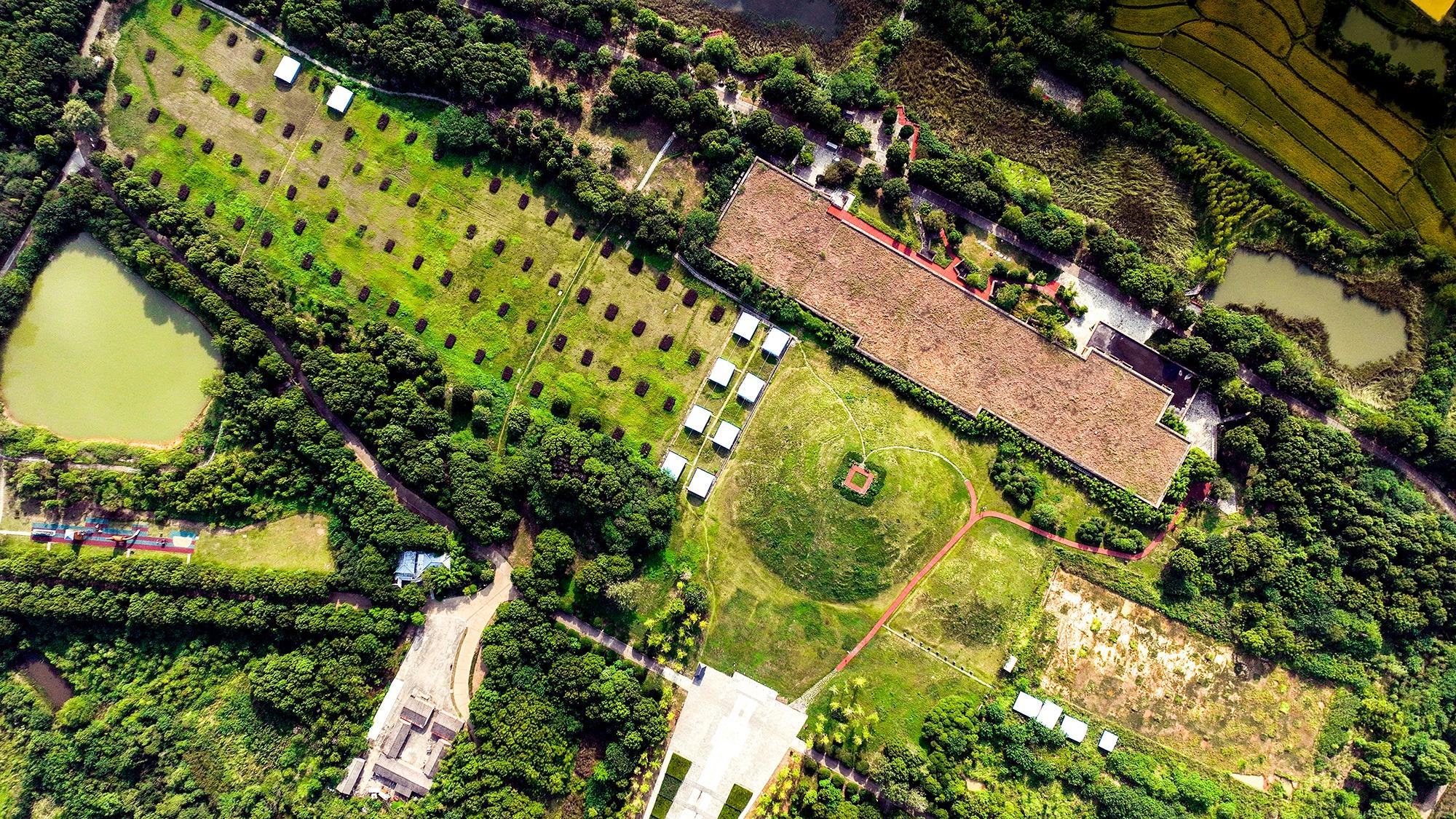 A bird's-eye view of the Xiongjiazhong National Archaeological Heritage Park. (PROVIDED TO CHINA DAILY)
A bird's-eye view of the Xiongjiazhong National Archaeological Heritage Park. (PROVIDED TO CHINA DAILY)
According to Zhou, during the Spring Festival, any visitors able to recite at least 20 of Qu Yuan's verses could get free admission to the mausoleum. Tickets are otherwise priced at 85 yuan ($12). And, as this year is the Year of the Dragon, anyone born in the Year of the Dragon is entitled to a half-priced ticket in celebration of the Lunar New Year.
"It's hard to recite Qu Yuan's verses because many of the characters he used are difficult to pronounce. We hope that the free-ticket policy can spark interest in Chu culture," says Zhou, who has worked at the park for eight years and has seen its growing popularity in recent years.
ALSO READ: Art form gets back in the saddle
Jia says that it's natural for people to seek other forms of enjoyment once their material needs have been satisfied. "We are always interested in exploring where we come from," he explains.
The heritage park is about a 40-minute drive from Jingzhou city in Hubei province. It has welcomed visitors from all over the world, and Zhou says that, during Spring Festival holidays, it's quite common for tourists to drive to the park from all over the country.
Contact the writer at dengzhangyu@chinadaily.com.cn


